Choosing A Dutch Oven – Factors To Consider
Shape

You might think that all Dutch ovens look more or less the same. But on closer inspection, you will see that some might be shorter and wider while others are taller and narrower for pots of a similar capacity. For example, the Tramontina Dutch oven is taller and narrower than the Lodge Enamel Dutch Oven in the 5.5 to 6.5-quart category.
A wider but shallower pot allows for a slightly bigger cooking surface. It will be able to accommodate more pieces of meat and searing will also be easier in a shallower Dutch oven compared to a taller one. However, a bigger base might not be a good fit for your cooktop if the burner is on the small side. This is where a taller but narrower Dutch oven might have an advantage. A smaller base would give you better heat distribution if its size is a better match for your burner.
So, take note of the shape of the pot and size of the base when you are choosing a Dutch oven to buy and consider these factors in relation to the size of your burner and the volume of food that you would typically cook.
Size
Since a Dutch oven will be put into the oven, you will also need to ensure that the size fits on the rack. Apart from the width, you also need to take into account the height with the lid on. If you have a small oven, you might have a problem fitting a covered Dutch oven inside.
Of course, the volume of food that you cook will also determine the size that you should buy. The popular ones are around 5 to 7-quart which would serve roughly 6 to 8 people but you can get them in various sizes ranging from 2 to more than 10-quart.
Weight
These are heavy cookware pieces. If you have got used to lightweight nonstick or ceramic cookware, be prepared for a drastic change. A 6-quart cast iron Dutch oven commonly weighs 13 to 15 lbs. But some can be a few lbs lighter than others and although still heavy, it is at least more manageable when filled with food. Don’t forget that you will need to transfer the pot from stove to oven and then to the dinner table. So, weight matters especially if you are not a particularly strong person.
If you really want a lighter pot, you will need to consider a stainless steel Dutch oven instead of a cast iron one. The All Clad vs Le Creuset debate will spell out the differences between these two options and obviously, the All Clad will win hands down if you want a Dutch oven that wouldn’t strain your arms as much.
Interior Color
For enameled cast iron Dutch oven, the interior could be light or dark colored. This is one of the distinguishing features in the Staub vs Le Creuset comparison. A light-colored interior makes it easier to monitor browning. This is why many prefer it over a dark-colored cooking surface.
However, a light interior makes it easy to see stains and stir marks compared to a dark cooking surface. The latter will be able to hide the signs of wear and tear better to keep its appearance over a longer period of use.
Handles
Typically, handles don’t matter much to cookware users. But for Dutch ovens, it matters a lot more because they are heavy. Therefore, the handles need to be large enough for a secure grip with your oven mitts on. A drop can result in dire consequences to your floor tile or even your toes!
So, look at the handles when choosing a Dutch oven. Preferably, you should be able to fit all your fingers comfortably through the loop for a good grip. The knob on the lid needs to be large enough too to enable a good grasp when wearing oven mitts.
The Price Of A Dutch Oven
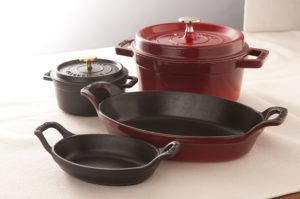 Lastly, we would need to look at the price when deciding which Dutch oven to buy. For raw cast iron vs enameled Dutch ovens, the former would be much cheaper. No doubt, you can also get enameled ones for less than $50, but the durability and quality would not be able to match the high-end ones that sell for $350 or more. Expensive brands such as Le Creuset and Staub are also French-made compared to cheaper enameled Dutch ovens which are commonly made in China.
Lastly, we would need to look at the price when deciding which Dutch oven to buy. For raw cast iron vs enameled Dutch ovens, the former would be much cheaper. No doubt, you can also get enameled ones for less than $50, but the durability and quality would not be able to match the high-end ones that sell for $350 or more. Expensive brands such as Le Creuset and Staub are also French-made compared to cheaper enameled Dutch ovens which are commonly made in China.
Basically, if you have no issues using Chinese-made cookware, there are plenty of choices at much more affordable prices. The quality may not be on par with French-made Dutch ovens, but they are good enough for home use and the low price makes them easy to replace over time.
If you rather avoid made in China cookware but can’t afford the price of a Le Creuset, then you can always go back to a raw cast iron Dutch oven. Lodge cast iron products are made in the USA and this should give reassurance on the safety aspect.
Of course, if you can afford it, then you should take a look at the French-made Le Creuset and Staub. Choosing a Dutch oven in this high-end category is for the more discerning cooks and for those who want the very best that money can buy.
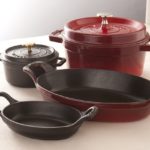
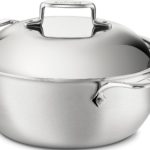
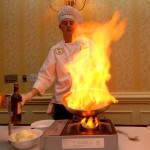
 0
0 

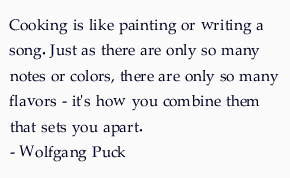

Speak Your Mind